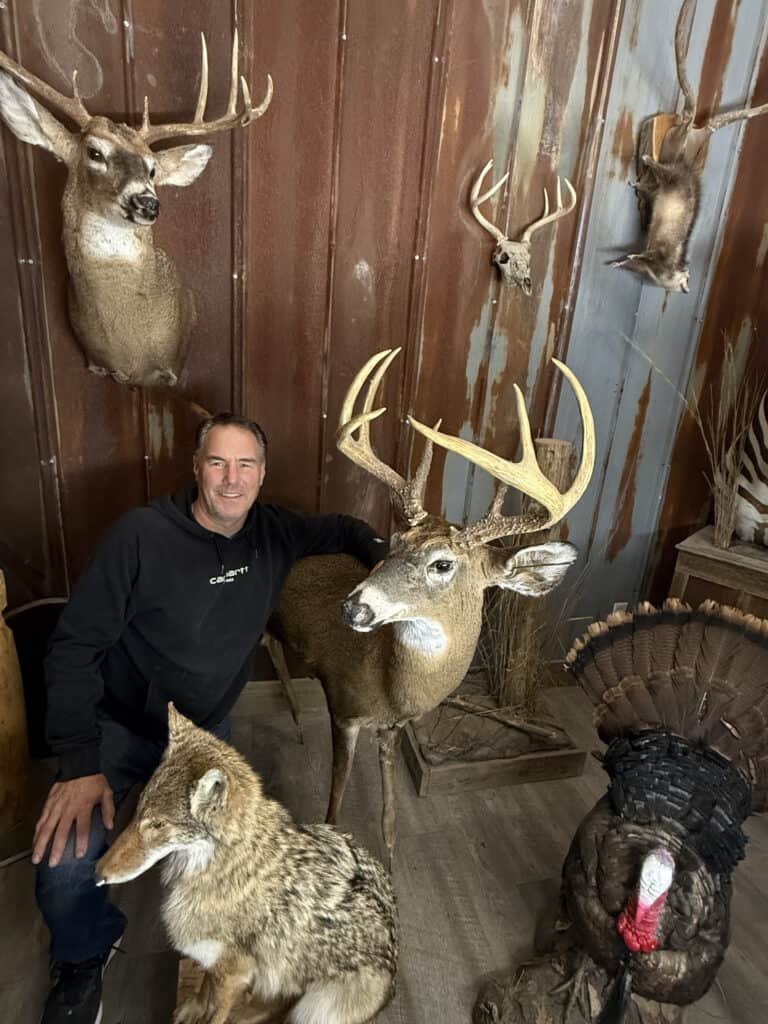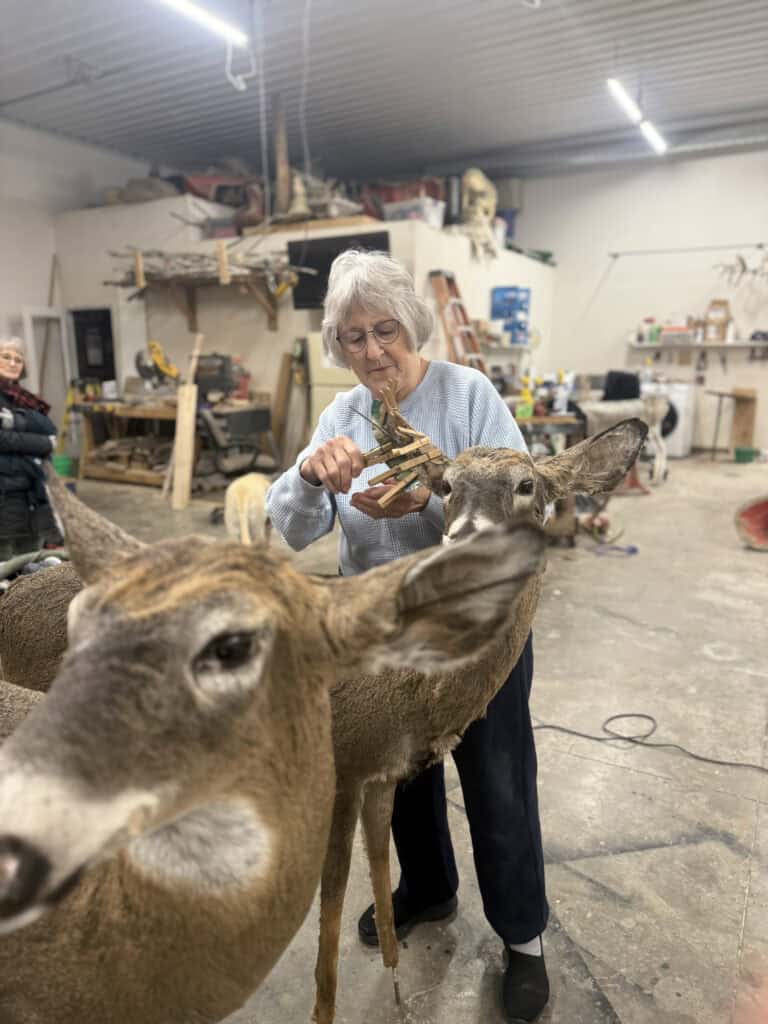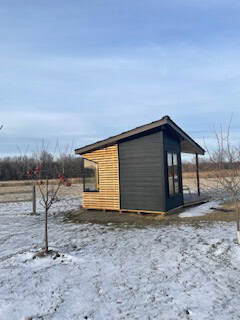
January 6, 2025
MOSINEE – For the past 30 years, Brian Wolslegel has played a critical role in catching and stopping poachers.
Through his business, Custom Robotic Wildlife, Wolslegel creates robotic animal decoys for the Department of Natural Resources (DNR) and law enforcement officials throughout the U.S. and Canada.
The officers, he said, use these robots in sting operations to catch poachers and illegal hunting.
“This isn’t your grandfather’s decoy,” he said. “These things are high-tech.”
From deer and elk, to turkeys and moose, Wolslegel said he can create nearly any robotic wildlife – doing his part to stop poaching and illegal hunting.
“Our professionally prepared taxidermy decoys are enhanced with robotic movements creating realistic animals that fool poachers,” he said.
Becoming Custom Robotic Wildlife
Though he has devoted three decades to Custom Robotic Wildlife, Wolslegel said it wasn’t the path he had planned to take.
His original goal, he said, was to be a firefighter and EMT, but when he graduated and there were no jobs available, a new passion was sparked.
Wolslegel said the dad of a friend he played softball with owned a taxidermy shop and offered him a job until he found work as a firefighter.
After working at the shop for about two years, Wolslegel said the idea behind Custom Robotic Wildlife came about.
As he started ramping up the shop’s decoy side of the business, he said someone from the DNR office right across the street approached them asking about making a deer decoy for them.
“It didn’t have any robotics in it,” he said. “(But after that), we started playing around with robotics, and using fishing line from the ear to the tail, so the ear would move and tail would twitch, things like that.”
The turning point for getting involved at the national level, Wolslegel said, was when the Oregon State Police (which also runs the state’s DNR) contacted Custom Robotic Wildlife and asked about doing an elk decoy.
From there, he said Custom Robotic Wildlife was put in touch with the North American Wildlife Enforcement Officers Association (NAWEOA) and has since attended NAWEOA’s conference every year, which is held in different locations throughout the U.S. and Canada.
Today, Wolslegel said Custom Robotic Wildlife works closely with law enforcement agencies to create products that safely and effectively help them in the war against poaching.
The process to make robotic animals, he said, takes several weeks – with the drying process taking six to eight weeks.
A family business
Wolslegel said Custom Robotic Wildlife is a true family business – with his kids growing up in the shop and watching the business grow.
While all of his kids have helped throughout the years, he said his 17-year-old daughter, Ella, wants to continue to work with him and maybe one day take over the business.

“She’d be the one to do it, too,” he said.
Wolslegel said even his 76-year-old mother works at the shop.
“She’s a great seamstress, and she’s sewed all her life,” he said. “She said if she can sew dresses, she can sew animals, and she was right. She’s been able to sew any animal I’ve had.”
And though he never followed his original career path, Wolslegel said his kids have.
“I’ve never fought a fire, never gone on an ambulance ride, however, my son is a full-time firefighter and paramedic for the City of Wausau and my daughter is training to do the same,” he said. “It’s crazy how life works.”
Utilizing robotics, thermal to catch poachers
Wolslegel said he’s never really been much of a hunter, however, he describes himself as a conservationist at heart.
He said his passion has become creating functional art to catch the bad guys.
The taxidermy part of the job, Wolslegel said, has been fairly easy as his mentor taught him how to do that whereas the robotic end has been more trial and error.
He said his first robotic decoys used RC car motors.
Since then, Wolslegel said he’s developed other ways to make the decoys move – a process that as a self-taught robotics expert “has been part of the learning process.”
Throughout the years, he said he has been able to perfect the different moving parts of the animal, originally just focusing on heads and tails.
Wolslegel said he’s been able to get legs to stomp the ground, and more recently gotten ears to move, which he said is “pretty cool.”
Officers, he said, have reported that having the ears move has changed the game in a lot of cases.
Decoys, Wolslegel said, can be enhanced with hand-held, radio-controlled units or be set up to run a preprogrammed routine.
Another improvement he’s been working on is getting cold “breath” to come out of the mouth using CO2 cartridges.
For many years, Wolslegel said purely utilizing robotics was what Custom Robotic Wildlife focused on – now the new “hot” tech is thermal, which he said is also the hardest thing he’s worked on.
“A lot of these poachers are using thermal scopes,” he said. “Every day I get calls from officers asking if we have anything that produces a heat signature, because right now if they put the robotic decoy out and it doesn’t show a heat signature the poachers won’t shoot it.”
As poachers get more savvy, Wolslegel said he has to advance Custom Robotic Wildlife’s tech to keep up with the demand.
Durability, he said, is another important detail.
Decoys, Wolslegel said, have to be able to take a few shots, and still be able to work continually, “otherwise it’s just an expensive realistic looking decoy.”
Over the years, Wolslegel said Custom Robotic Wildlife has worked on everything, including, but not limited to: deer, coyotes, moose, bears, turkeys, pheasants, foxes, mountain lions, bobcats and fish.
Each year, Wolslegel said he sells as many as 100 whitetail deer, which is by far his most popular item.
Recently, he said he worked on an Axis Deer that was shipped down to Texas.
Since the deer is not native to Texas, Wolslegel said it is highly poached as a result.
At the end of the day, Wolslegel said he knows whatever method is used to catch poachers and illegal hunters holds them accountable and helps keep animal herds strong.
“Genetics is such a huge thing, and people don’t get it,” he said. “That’s where the poachers rob the system – they’re not shooting the little ones, only the big ones. They don’t care about the meat, they just want the head.”
More than just catching poachers
Though the main line of Custom Robotic Wildlife’s work is in “catching the bad guys,” Wolslegel said his decoys have also been featured in movies and TV commercials.
He said he has clients in Chicago and Alberta, Canada who call his work “animal talent.”
Learn more about Custom Robotic Wildlife at roboticwildlife.com.
 Creating spaces where people can unwind, appreciate world around them
Creating spaces where people can unwind, appreciate world around them 3 Sheeps, LeRoy Butler team up for NFL Draft celebrations
3 Sheeps, LeRoy Butler team up for NFL Draft celebrations








